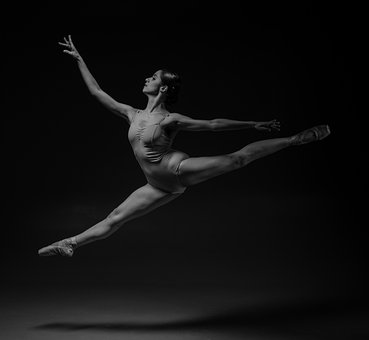Body-Shaming in Ballet

By Pixabay licensed under the Pixabay and CC license
Ballet especially has always been a discriminating and scrupulous art form, silently picking out the worst parts of a person’s body in the loudest manner possible.
March 7, 2023
A long, gleaming mirror. A quick glance at the person next to you. A judgmental stare from the others. That’s all it takes to send a humiliating wave of bloodred shame through someone’s body. That’s all it takes for a girl who just wanted to dance to hate herself immediately. Suddenly her cheeks look too round, her stomach seems too flabby, her thighs appear to be too big. A girl who just wanted to be herself and try her best in ballet class can want to turn and leave in a matter of seconds.
People say that dance is an international sport and art. They say that anybody can dance if they want to, and nobody has the right to judge them. The irony in those words is that dance has never not been about degrading the ones that have an ounce of fat on them. Ballet especially has always been a discriminating and scrupulous art form, silently picking out the worst parts of a person’s body in the loudest manner possible. From the very beginning, during the fifteenth century in the Italian Renaissance, Balthasar de Beaujoyeulx would only have skinny dancers be in his company. Beaujoyeulx was and still is considered the foundation of ballet. He paved a way as a ballet/theatrical dance composer for other composers and teachers to come, and for him, having only thin dancers was a subtle requirement at first. Soon, though, that condition would flourish throughout the centuries. In 1929, George Balanchine became a ballet choreographer and professor, and one of the best ones at that. However, tucked underneath all of the endless admiring praises and panegyrics, Balanchine did admit that his form of dance was all based on the way he wanted the female body to look: skinny.
No known and successful dancer is overweight. Famous ballerinas like Misty Copeland, Anna Pavlova and Sylvie Guillem are all perfect, thin dancers. Usually, in performances, it is very obvious that there are no principal dancers and even dancers in the corps de ballet that are a tad bit overweight. According to ballet choreographers in the past, having the same height and weight dancers are pleasing to the eye.
Even now, ballerinas get subconsciously stared at in discretionary ways when they are even a little bigger than other dancers. Suppose a girl who has an average height and weight performs in a ballet dance. Once she dances with the other ballerinas, she stands out in a way that would not happen if she was standing in a regular crowd of people. This leads to another topic, which is that ballet dancers feel like they seem obliged to stay underweight and unhealthy to look pulchritudinous when performing. To achieve this outrageous standard, dancers have to undergo extreme diets and exercise excessively. Doing this, many dancers can develop eating disorders that can destroy their mental and physical health.
However, these ridiculous standards are slowly melting away. In more performances, you can see that dancers can come in all shapes and sizes, and that anyone can truly become a dancer. In my dance classes, the students are all very diverse, but no one has ever mentioned it and we have never judged each other. Still, this gradual process is not good enough. Things need to change in the ballet industry, as well as other dance and sports industries. If we want this kind of subject to get better, then we need to step up and be determined to create adjustments.






